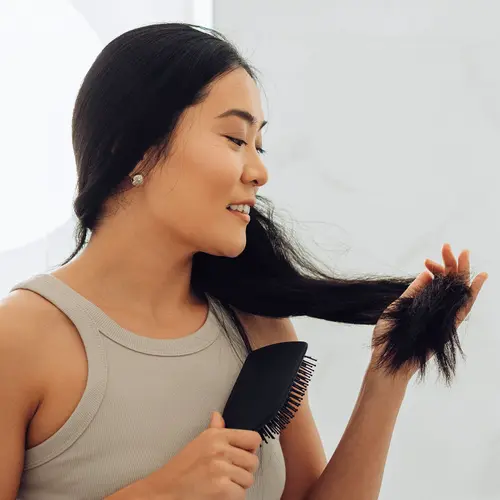If you're like most women, mascara is a key item in your makeup bag. Some 65% of us whisk it on our lashes in hopes of making them look longer and fuller. But do you ever wish your lashes were just longer and fuller to begin with?
Your wish might be granted: Eyelash extensions are a growing trend at spas and salons. "Extensions look beautiful when they're done right. They completely eliminate all need for mascara," says Sophy Merszei, founder and CEO of NovaLash, a Texas-based company that certifies eyelash technicians.
Eyelash extensions are individual lashes, made of a synthetic fiber such as nylon, which a professional glues one by one to each of your top lashes. "It is one of the hardest beauty procedures for a cosmetologist to learn. It's like microsurgery," Merszei says.
Using long, pointed tweezers, the tech brushes a single synthetic lash in a dab of adhesive. With another pair of tweezers, she separates the natural lashes to isolate just one. She places the synthetic lash on the natural lash, holding it for a few seconds while the glue bonds. The tech repeats the process, one lash at a time, attaching 40 to 100 lashes per eye. The tech will use several lengths of lashes, attaching the longest artificial lashes to your longest natural lashes.
Eyelash extensions last a few weeks to 2 months and fall out when your natural lashes do. "You should still have 50% of the extensions remaining after 30 days. Then all you need is a little touch-up once a month on the regrowth," Merszei says.
Find a Good Eyelash Extension Technician
Eyelash extensions are relatively new in the United States. The FDA does not regulate the products, and Texas is the only state that regulates the industry.
"Individuals need to advocate for themselves. Is the facility clean and neat? Are the technicians well trained? Does the facility have a good reputation?" says Philip R. Rizzuto, MD. He's an eye doctor and communications secretary for the American Academy of Ophthalmology.
Merszei recommends you first choose a national brand that certifies technicians, and then find a technician in your area. That way, you can research the training, the products, and who can buy the products. Some brands sell only to licensed beauty or health professionals, so if a salon uses that product, its techs have credentials.
"We get calls and emails every week from people who end up in the doctor's office," Merszei says, "because they had a poorly trained technician."
Unqualified techs might apply lashes to the eyelid instead of the lash, which can cause irritation or even serious injury. Or they might apply several lash extensions to one natural lash, causing lashes to fall out prematurely from the weight. Some may glue strips of false lashes to clients' eyelids with permanent adhesive. All of these are dangerous, improper techniques.
"The technician should go through all the risks and benefits of having eyelash extensions" before applying them, Merszei says. The technician should also ask about any conditions you may have that would make eyelash extensions unsuitable for you.
Online, you'll find a lot of conflicting information about formaldehyde in eyelash adhesives. Many adhesives do contain at least trace amounts, as do many cosmetics, including some mascaras. A small percentage of people are allergic to the chemical. Some brands offer adhesives with formaldehyde levels too low for a lab test to detect or trace amounts below the maximum the FDA recommends for cosmetics. Many adhesives are intended specifically for sensitive clients.
Seek brands that openly share this information."I'm not here to talk people out of getting eyelash extensions. But not everybody is a good candidate," Merszei says. "I've had mine on for about 9 years now. I just keep touching them up, and I love them."
Eyelash Extension Tips
Rizzuto offers these pointers for readers interested in eyelash extensions.
Don't confuse semi-permanent eyelash extensions with a surgical eyelash transplant -- a procedure that only a doctor can do.
Eyelash extensions are a spa or salon procedure that takes 2 to 3 hours for the first application, which can run from $150 to $600, depending on your location. Monthly touch-ups range from $50 to about $65.Look for a salon that uses medical-grade adhesive, like the type used to close wounds in lieu of stitches.
Choose a brand that discloses ingredients. Many companies post safety and toxicity reports on their web sites or provide them upon request.
"The biggest concern with regard to eyelash adhesive is whether a person is sensitive or allergic to anything in the glue," Rizzuto says. "She should ask what type of adhesive is used and what the ingredients are. Then she can assess whether or not she may be allergic to any of the ingredients."
Find more articles, browse back issues, and read the current issue of "WebMD Magazine."

